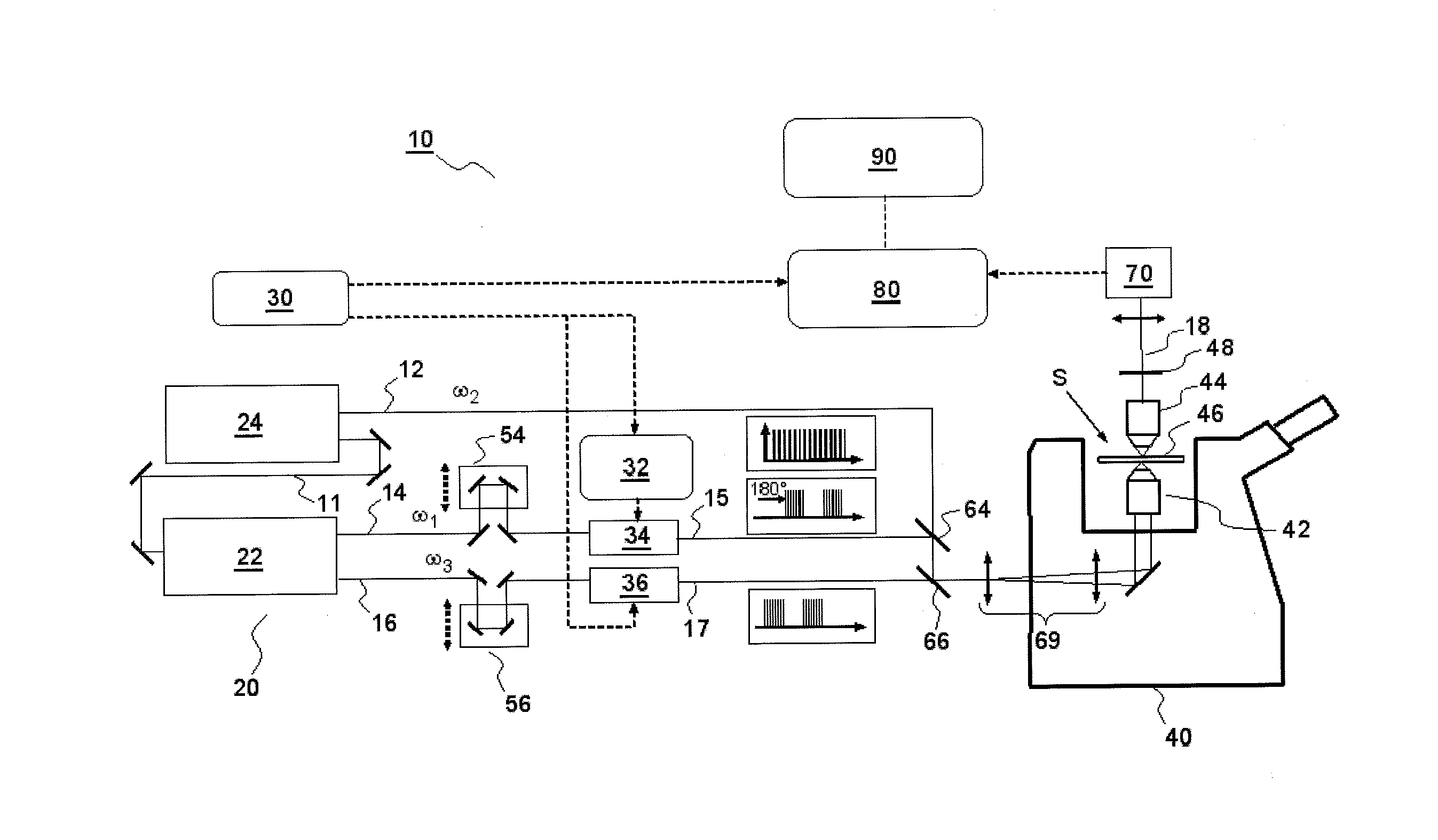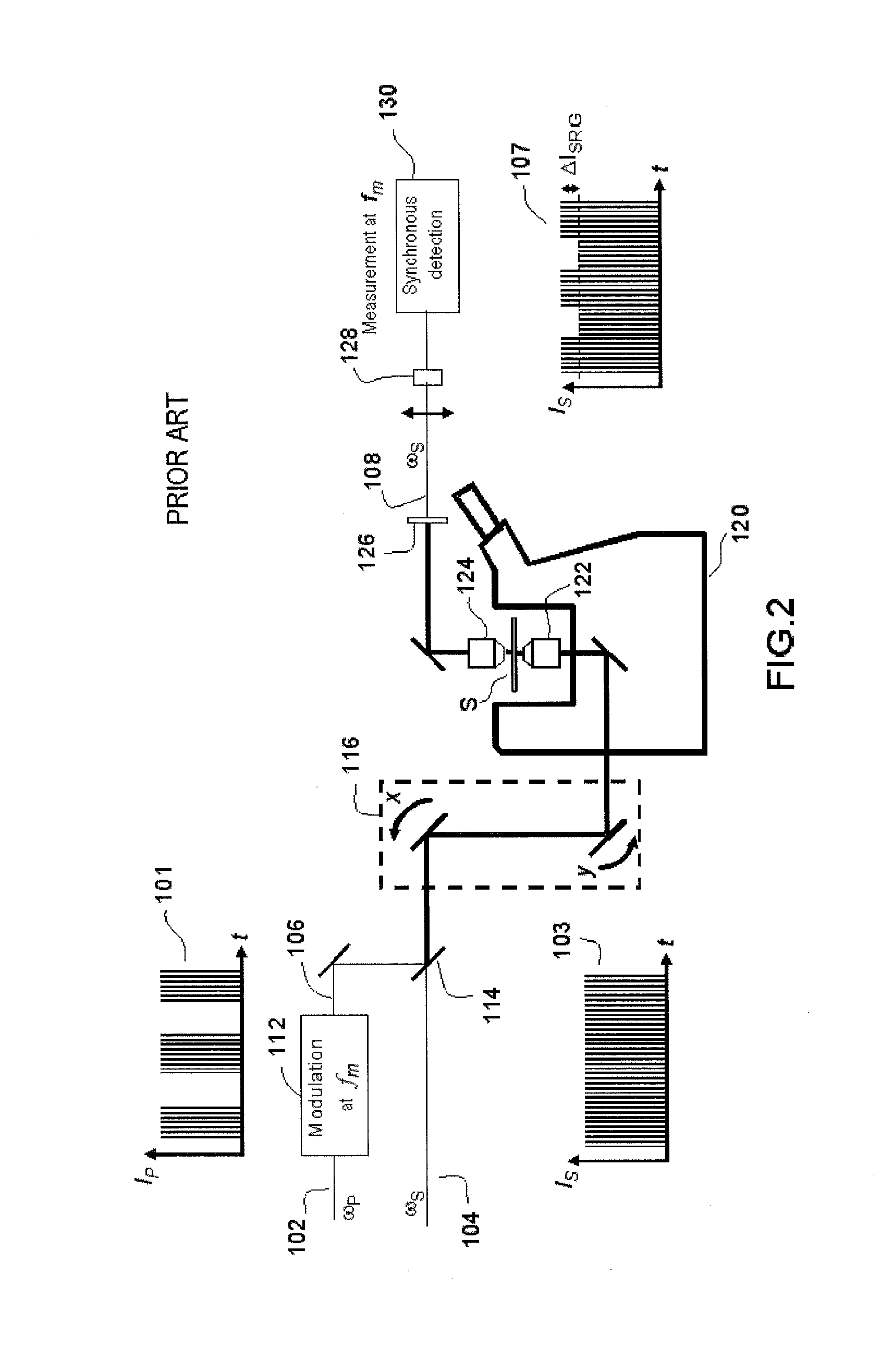Device and method for stimulated raman detection
a technology of stimuli and raman, applied in the field of devices, can solve the problems of detection posing a different problem, low repetition rate (1 khz) is incompatible with fast-scanning microscopy, and is not suitable for biological imaging, etc., and achieves the effect of causing artifacts
- Summary
- Abstract
- Description
- Claims
- Application Information
AI Technical Summary
Benefits of technology
Problems solved by technology
Method used
Image
Examples
Embodiment Construction
[0059]In the figures, identical elements are indicated by the same references.
[0060]FIG. 4 shows an example of a device for detecting a non-linear resonant SRS optical signal according to one variant of the present invention, implementing amplitude modulation.
[0061]The detection device 10 comprises a source 20 for emitting trains of pulses centered on the angular frequencies ω1, ω2 and ω3, such that ω2−ω1=ω3−ω2=ΩR where ΩR is a molecular vibrational resonant frequency that it is sought to analyze in a sample S. The pulses are for example picosecond pulses, of a few cm−1 in spectral width, or may be frequency chirped pulses as will be described in more detail below. Typically, the trains of pulses for example comprise pulses of a few picoseconds, emitted at rates of a few tens of MHz, for example about 80 MHz, for a length of time of about one microsecond.
[0062]According to one variant, the emitting source 20 comprises a laser system consisting of a master laser 24 emitting trains 12...
PUM
| Property | Measurement | Unit |
|---|---|---|
| length of time | aaaaa | aaaaa |
| wavelengths | aaaaa | aaaaa |
| wavelengths | aaaaa | aaaaa |
Abstract
Description
Claims
Application Information
 Login to View More
Login to View More - R&D
- Intellectual Property
- Life Sciences
- Materials
- Tech Scout
- Unparalleled Data Quality
- Higher Quality Content
- 60% Fewer Hallucinations
Browse by: Latest US Patents, China's latest patents, Technical Efficacy Thesaurus, Application Domain, Technology Topic, Popular Technical Reports.
© 2025 PatSnap. All rights reserved.Legal|Privacy policy|Modern Slavery Act Transparency Statement|Sitemap|About US| Contact US: help@patsnap.com



